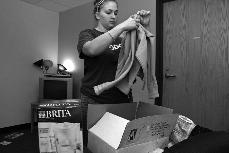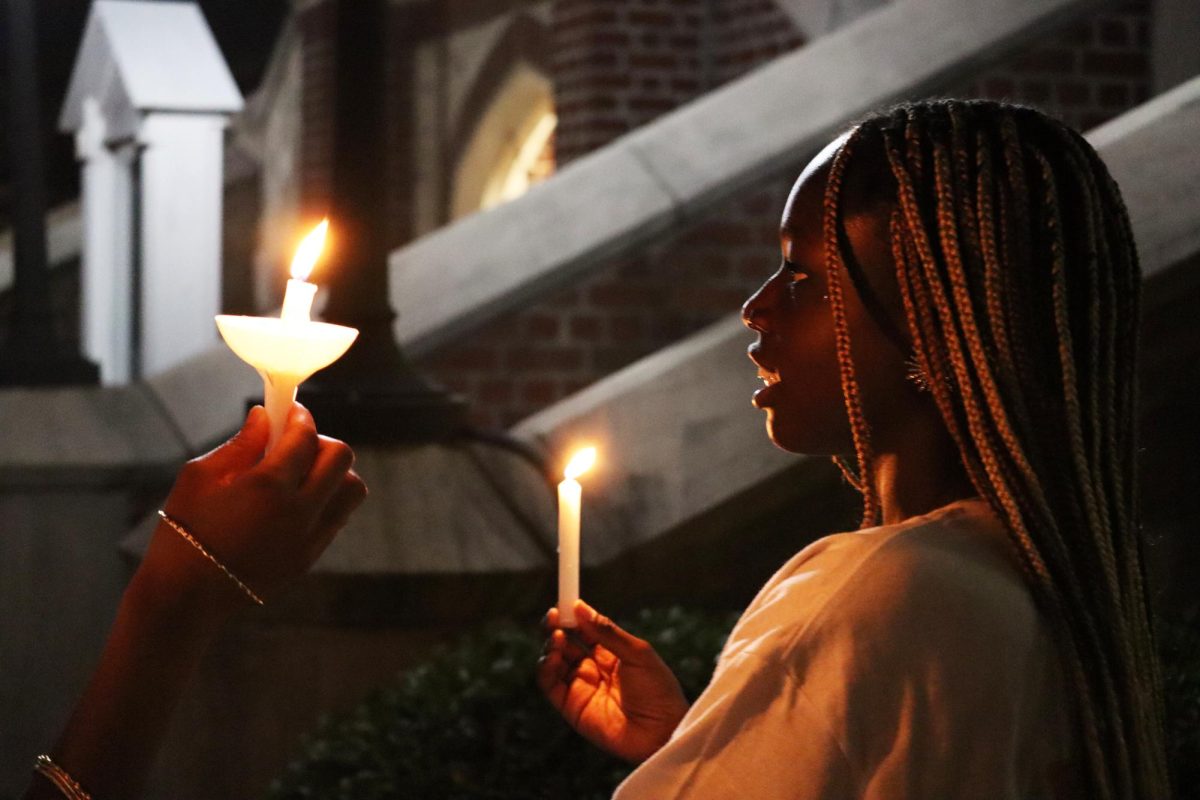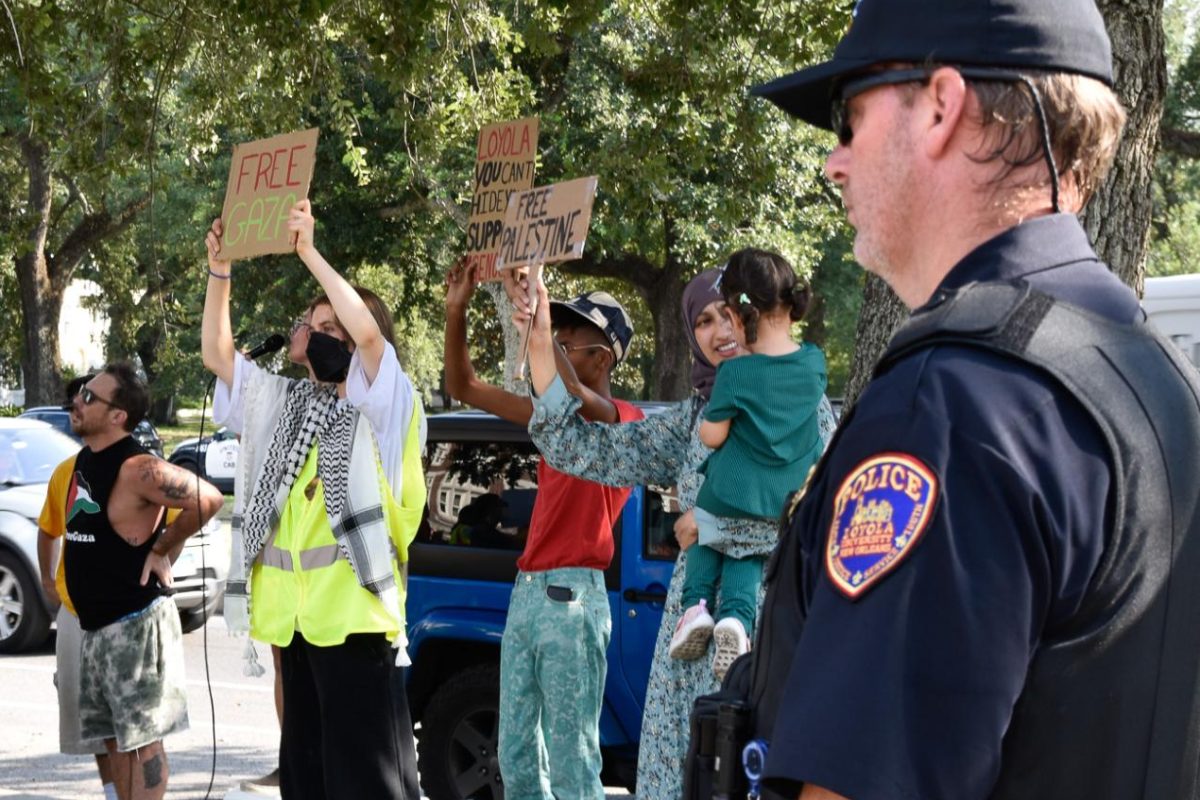Newspapers and media pundits everywhere christened Tropical Depression 10 as an “Imperfect 10.” Following days of intense scrutiny, the tropical depression, which predicted to strengthen and potentially hit the greater New Orleans area, fizzled into obscurity as it passed over central Florida last week.
To many students like Richard Tucker, political science freshman, and Elle Gaarder, biology sophomore, the storm in the Gulf of Mexico might as well have been in the Persian Gulf.
“My parents kept calling from (upstate) New York asking, ‘What’s going on? Have you heard anything?’ I was like, ‘Calm down,'” Gaarder said. “I wasn’t really following the news or anything.”
Tucker said, “I heard of it but hadn’t seen anything about it on the news. Other people had mentioned it, but that was only because they were hoping it would rain.”
Their apathy is understandable, given that, historically, most tropical storm and hurricane warnings have been simply that – warnings that remain unrealized and are filed away to gather dust in obscurity with other false alarms.
Many locals concur that these false alarms contributed to the severity of Hurricane Katrina in 2005.
“We had evacuated for every other storm,” said lower St. Bernard Parish native Lacey Landry. “Every year we’d leave for what? A two- or three-day vacation? My mom and I decided to stay this one time.”
“This time,” though, the floodwaters reached the attic of Landry’s two-story home.
Hurricane warnings were issued for New Orleans every year prior to 2005, but the last major hurricane to severely impact New Orleans, Hurricane Betsy, struck in 1965.
Although Tropical Depression 10 ultimately posed no threat, the university did not assume the same nonchalance as Gaarder, Tucker and other students. Loyola officials took no risks and implemented the first stages of its highly publicized hurricane evacuation plan.
Faced with concerned parents of both returning and incoming students, the university amended its Hurricane Emergency Preparedness Plan after learning from Katrina.
The greatest and least known change requires all students and faculty to leave campus.
“We used to permit those who didn’t evacuate to stay in the dorms,” said Sam Bradley, a resident assistant in Biever Hall. “The buildings are made to withstand hurricanes and are obviously high enough to avoid flooding. We’re totally self-sufficient. That’s the problem. We’d be one of the last groups to be rescued.”
Despite being posted on the Division of Student Affairs Web site and being discussed at residence hall meetings, few students are aware of the university’s policy.
“I have no clue what the procedures are. I have no family here on the mainland so I have no idea what I’m supposed to do,” said Nicole Okemura, a political science sophomore from Hawaii. “Now that you mention it, I’m really nervous about getting stranded or whatnot.”
THE PLAN
Loyola’s hurricane emergency plan is a detailed resource that describes what must be done through each stage of hurricane season. A committee of 15 staff members, including Vice President of Student Affairs Cissy Petty, Residential Life Director Robert Reed and Interim Dean of the College of Humanities and Natural Sciences Mary McCay, established and execute the plan.
For the first stage, students are encouraged to prepare prior to a hurricane threat. The university stresses that each student must devise an evacuation plan and create “disaster survival kits.” Residents were required to submit written evacuation plans to their resident assistants.
A disaster survival kit consists of the same materials that WVUE-TV meteorologist Bob Breck and other local meteorologists suggest – one including a first-aid kit, non-perishable food and a battery-powered radio.
The second stage begins when a weather pattern elevates to a tropical storm expected to head to New Orleans. The Hurricane Emergency Preparedness Team convenes to assess the situation and determine necessary measures. It’s at this time that the team encourages students to start finding transportation by which to evacuate.
Stage three involves the cancellation of classes. Once Petty declares that classes are cancelled, non-resident students are required to leave campus, and all non-parking permit holders must remove their vehicles from both garages.
Residents have the option of remaining in their rooms until they evacuate and are encouraged to move their vehicles to the higher floors in the parking garages to avoid flood damage.
While the team stresses that the university will not open as an emergency shelter, the school will bus residents unable to evacuate to St. Michael the Archangel High School in Baton Rouge.
Petty discourages students from relying on that option. “In case of a long emergency, conditions may become quite difficult,” she said. “Those 150 students who must be transported to the mandatory evacuation site can expect to share an open gym floor without cots in a non-air-conditioned building with extremely limited resources.”
In the case of severe devastation, campus offices will operate in Baton Rouge, and students are expected to check their Loyola e-mail accounts and Blackboard for the university’s status, to communicate with professors and potentially continue course instruction electronically.
If the emergency proves to be another false alarm, students are expected to return to school as soon as the campus is deemed safe.
In 1997, the state enacted a new automobile evacuation policy called Contraflow to alleviate traffic during an evacuation.
Interstates become one way heading away from the area being evacuated. I-10 and I-12 move west into Texas while I-55 and I-59 head north into Mississippi. Experts recommend heading north to a safe distance before turning east or west to avoid being hit by a sudden change in the storm’s path as it approaches land.
Evacuations are typically ordered several days before a storm is scheduled to touch land, giving residents ample opportunity to evacuate.
“I plan on evacuating with my roommate,” Gaarder said. “She’s from here and has a car, so we’ll just go wherever her family goes, probably. I think we plan on leaving at, like, 3 a.m. to avoid traffic.”
While leaving late at night may seem like a great idea, both city and university officials urge students to leave as early as possible.
But for many residents, particularly freshmen, evacuating by car is impossible. With no personal means of leaving the city, these pedestrians are forced to rely on the often-unreliable transportation from airlines and railroads.
Garret Kelly, a history freshman from Atlanta, will rely on local family to get him out of the city. “I’ll just go with them wherever they go. After getting out of the city I’ll find a way to get home.”
New Orleanians are often described as never living anywhere else, and even if they do, they somehow come back.
This also inhibits many local students whose entire support network is based in New Orleans. Forced out of their home, many local students drive or hitch rides until they find a vacant hotel.
“For Katrina we just drove,” said Tracy Cochran, psychology and theatre sophomore, of her family. “We stopped outside of Baton Rouge when we found a place.”
International students face similar problems.
“I haven’t the foggiest idea where I’d go, or how I’d get there,” said Tucker, an international student from Venezuela. “I guess I’d take the train to Atlanta where I have friends.”
While everyone hopes that the city is spared by 10 more “Imperfect 10s,” the fact remains that Hurricane Katrina: Part Deux could only be an atmospheric disturbance away.
Justin Templet can be reached at [email protected].








